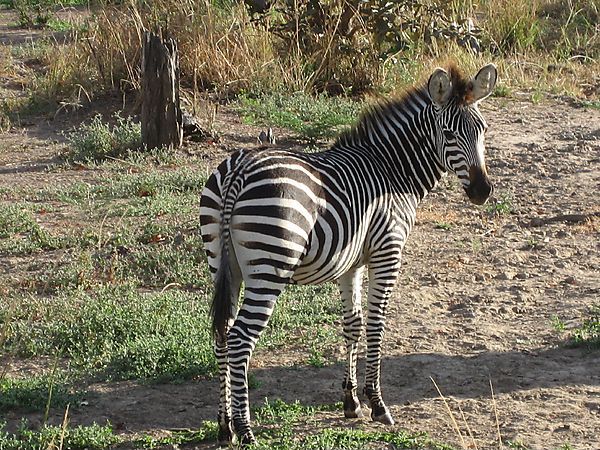Zebra
Parent page
On this page
Introduction to Zebra's
The most common species of Zebra found in Africa is the Plains/Burchell's Zebra. Other species found are the very rare and endangered Cape Mountain Zebra; Hartmann's Zebra (a subspecies of mountain zebra) found mainly in Namibia; Grévy’s zebra, found mostly in Kenya.
Description and Characteristics
Related to the horse, a Burchell's Zebra is of stocky build with wide black and white stripes that run diagonally and lengthways on the rump and continue on to the belly, all the way down to hooves. The mane is upright and striped to match the neck. The tail is striped with a dark tassle. Zebra stripes are as individual as a human fingerprint.
Grévy’s zebra has narrow stripes set closely together. Horizontal stripes on the haunches, shoulders, and legs are short and fine and extend all the way down the legs to the hooves. The mountain zebra has wider stripes than the Grévy’s zebra, particularly on its rump.
On both Grévy’s zebra and the Mountain Zebra the undersideof the belly is completely or mainly white, which differs from the Plains/Burchell's zebra whose stripes wrap around from the back to the belly.
Zebra's, although nervous and jumpy, are a very sociable animals and generally found in large herds with other herbivores such as antelopes, wildebeest, giraffe and buffalo.
Feeding/drinking Habits
Zebra are exclusively grazers, eating over 50 different species of grasses.
Habitat
The Plains/Burchell's Zebra lives throughout the grasslands, savanna, and scrub of East Africa, reaching as far as Angola in the west generally in close proximity of a permanent water source. Grévy’s zebra lives in grasslands and thorny scrublands on the borders of northern Kenya, Somalia, and Ethiopia. The mountain zebra lives in the high ground of South Africa, and in the coastal hills of Namibia and Angola.
Size and Lifespan
Male Plains/Burchell's Zebras can weigh up to 300 Kg and have a shoulder height of about 50 inches whilst females are a little smaller. Grévys zebras weigh up to 450 kg and both sexes weigh about the same. Zebra's can live up to 30 years old but generally the life expectancy in the wild is about 12 years due to predators.
Reproduction
Females are about 3 years old when they give birth to their first foal. The gestation period lasts for about 12 months and the foal is usually suckled for 6 months. For males, breeding often does not begin until age five or six.
Predators and Threats
Zebra's are prey to lions and spotted hyenas. The Plains/Burchell's/Chapman's Zebra is threatened by hunting and by habitat change from ranching and other kinds of farming. Both the Grévy’s zebra and the mountain zebra are listed as endangered on the Red List of Threatened Species.
The Grévy’s zebra is threatened both by hunting and by local livestock that compete with it for water and food. Its range has shrunk dramatically, and it is now so small that environmental hazards, such as drought, can easily affect the entire species.


























